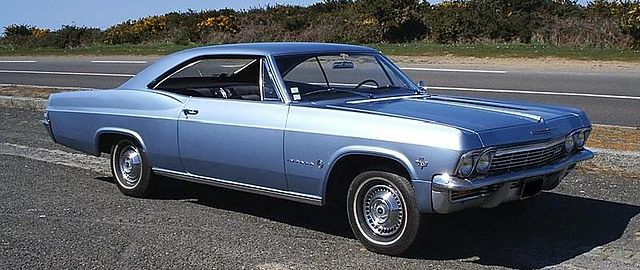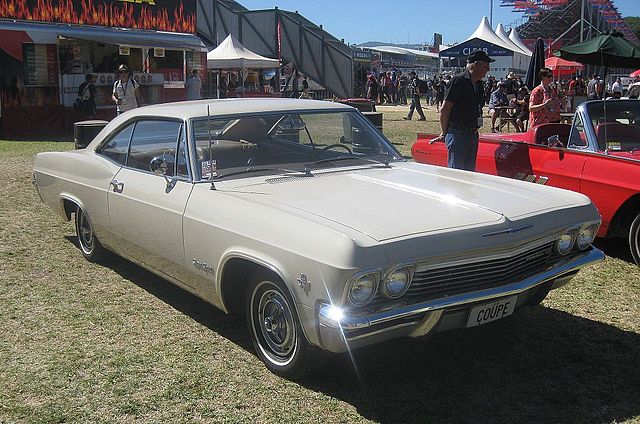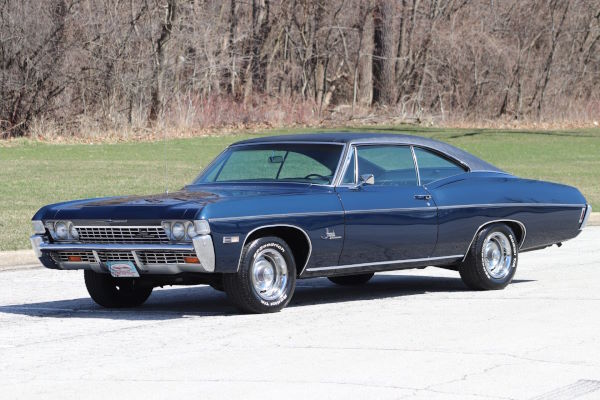
The Chevrolet Impala, introduced in 1958, has become one of the most iconic American cars in automotive history. Among its many iterations, the fourth generation (1965 – 1970) stands out as a significant period of transformation and innovation.
This article delves into the history, design, performance, and legacy of the fourth-generation Chevrolet Impala, highlighting its enduring appeal and impact on the automotive industry.
History and Context

The Evolution of the Impala
The Chevrolet Impala was initially introduced as a top-of-the-line trim package for the Bel Air in 1958. It quickly gained popularity due to its stylish design and powerful performance. By 1965, the Impala had firmly established itself as a distinct model, and the fourth generation marked a new era of refinement and sophistication.
Market Positioning in the 1960s
In the 1960s, the automotive industry was characterized by rapid technological advancements and changing consumer preferences. The Chevrolet Impala aimed to capture the growing demand for full-sized cars that offered a blend of luxury, performance, and affordability.
The fourth-generation Impala was designed to appeal to a wide range of buyers, from families seeking comfort and reliability to enthusiasts craving power and style.
Design and Styling

Exterior Design
The fourth-generation Chevrolet Impala introduced a sleeker, more aerodynamic look compared to its predecessors. The 1965 model featured a new full-size body with a curved, fastback roofline that set it apart from other cars on the road. The distinctive “Coke bottle” styling, characterized by its bulging midsection and tapering ends, became a hallmark of this generation.
Interior Features
Inside, the Impala offered a spacious and comfortable cabin with a focus on luxury and convenience. The dashboard was redesigned for better ergonomics, and high-quality materials were used throughout the interior. Features such as air conditioning, power windows, and an AM/FM radio were available, making the Impala a competitive choice in the full-sized car market.
Variants and Body Styles
The fourth-generation Impala was available in a variety of body styles, including the two-door coupe, four-door sedan, convertible, and station wagon. This range of options allowed buyers to choose the model that best suited their needs, whether they were looking for a family car or a sporty ride.
Performance and Engineering

Engine Options
One of the highlights of the fourth-generation Impala was its impressive array of engine options. The base models were equipped with the reliable 230-cubic-inch (3.8 L) inline-six engine, while those seeking more power could opt for the 283-cubic-inch (4.6 L) V8.
For the performance enthusiasts, Chevrolet offered the legendary 409-cubic-inch (6.7 L) V8 and the 427-cubic-inch (7.0 L) V8 engines, which delivered thrilling acceleration and top-end speed.
Transmission Choices
Buyers had the choice between manual and automatic transmissions. The three-speed manual transmission was standard, but a four-speed manual and a two-speed Powerglide automatic transmission were also available. In 1965, Chevrolet introduced the Turbo Hydra-Matic three-speed automatic transmission, which provided smoother shifting and improved driving comfort.
Suspension and Handling
The fourth-generation Impala featured an advanced suspension system that enhanced ride quality and handling. The front suspension used coil springs and an independent setup, while the rear suspension employed a live axle with coil springs. This combination provided a balanced and comfortable ride, making the Impala suitable for both long highway cruises and spirited driving.
Notable Models and Special Editions
The Super Sport (SS) Package
The Impala Super Sport (SS) was a performance-oriented variant that became a favorite among muscle car enthusiasts. The SS package included distinctive badging, upgraded suspension components, and optional high-performance engines. The 1965 Impala SS, equipped with the 409 or 427 V8 engine, became a symbol of American muscle car culture.
The Impala Caprice
In 1965, Chevrolet introduced the Caprice as an upscale trim level of the Impala. The Caprice featured more luxurious appointments, including a higher-quality interior, unique exterior trim, and additional comfort features. Due to its popularity, the Caprice eventually became a separate model line in 1966, further cementing the Impala’s reputation for versatility and appeal.
Cultural Impact and Legacy

Influence on Popular Culture
The fourth-generation Chevrolet Impala left an indelible mark on American popular culture. It became a symbol of the 1960s and 1970s, frequently appearing in movies, television shows, and music videos. Its association with the era’s car culture and its prominence in the lowrider community contributed to its enduring status as an automotive icon.
Collectibility and Restoration
Today, the fourth-generation Impala is highly sought after by collectors and automotive enthusiasts. Its classic design, robust performance, and cultural significance make it a prized possession. Many owners invest considerable time and resources into restoring these cars to their original glory, ensuring that the legacy of the fourth-generation Impala continues to thrive.
The Impala’s Enduring Appeal
The Chevrolet Impala’s ability to evolve with the times while maintaining its core attributes of style, performance, and comfort has contributed to its lasting popularity. The fourth generation, in particular, stands out as a period of innovation and success, showcasing Chevrolet’s commitment to excellence in automotive design and engineering.
Conclusion
The fourth-generation Chevrolet Impala (1965 – 1970) represents a pinnacle of American automotive achievement. With its distinctive design, powerful engine options, and cultural impact, this generation of the Impala remains a beloved classic.
Whether admired for its aesthetic appeal, performance capabilities, or historical significance, the fourth-generation Impala continues to captivate car enthusiasts and collectors around the world. Its legacy is a testament to the enduring allure of classic American cars and the timeless appeal of the Chevrolet brand.
